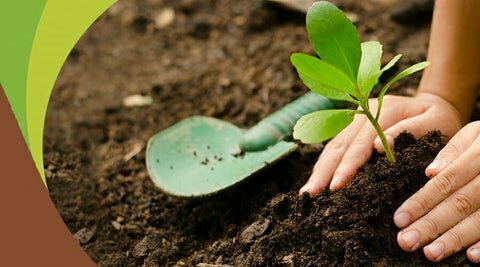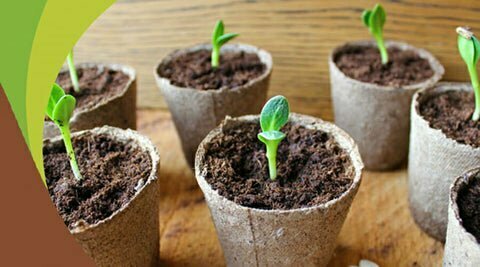Using coco peat to grow plants in pots
We all want to succeed when growing plants. Nothing compliments a home or garden more than lush greenery, and coco peat is the perfect material in which to grow healthy plants. However, being a relatively unknown composting option, many people aren’t entirely sure how best to use coco coir in pots. With just a little bit of extra guidance, you’ll be well on your way to exploring the never-ending benefits of this excellent planting material.
WHAT IS COCO PEAT?
Coco peat is created from coco coir, which in simple terms is the layer of pith that surrounds the husk of a coconut. In recent years many green-fingered people have cottoned on to coco coir’s excellent plant growing abilities, as well as its eco-friendly characteristics, in particular being the go to choice as a peat-free compost.

BENEFITS TO USING COCO PEAT IN POTS
- The primary benefit of coco coir and peat is how environmentally friendly it is, especially in comparison to other compost options such as peat moss. Created from the layer of pith inside a coconut, it is a completely natural by-product that would otherwise be discarded, making it one of the most sustainable planting options on the market.
- Adding to its environmental value, coco peat is completely re-usable. Once used to grow plants in one pot, it can be cleaned and strained – making it good as new. This not only decreases its carbon footprint; it also ensures that coco coir is a budget-friendly option.
- Coco peat is highly absorbent, holding around 30% more water than most peat. It is also excellent at retaining water, and is also able to release it slowly in order for your plant to better absorb it. This means that once you’ve done the planting, coco peat will do much of the after care for you. You’ll find yourself watering the plants far less regularly than if you were to use a conventional compost.
- Coco peat will do an excellent job of keeping your plants healthy, due to its anti-fungal properties. It is also resistant to mould, which in turn will help protect your plants from disease and decay as they grow.
- Coir is also neutral, with a pH value of 5.8–6.8. This is generally considered to be an ideal pH value for compost to release nutrients, and means that it’s not necessary to use a neutralizing products.
HOW TO PLANT IN POTS
Using coco coir to grow potted plants is relatively easy once you know what makes it different from conventional composts. Arriving to you as a compacted solid ‘brick’, coco coir simply needs to be soaked in water for at least an hour, where it will expand by up to seven times its original size. From here, it simply needs to be pulled apart and it’s ready to use.
It’s recommended that you line your chosen pot with a coco liner, cut to the correct size, for optimum results. Follow this with your eco-friendly coco peat and plant your seeds near to the top of the soil, following the regular guidelines for your choice of seed. Ensure that before you hydrate the compost, you add any necessary plant foods to the soil, as coir doesn’t hold any nutrients of its own. When hydrating, pour water into the soil until it begins to leak all the way through.
You can then let the incredibly absorbent coco peat work its magic. When continuing to water your plant, be sure to check the feel of the soil with your fingers. Plants in coco peat need to watered much less than regularly than in conventional soil, and it’s common knowledge that overwatering can be deadly. Remember that once you’ve finished using coco peat in your pot, it can easily be recycled.

THINGS TO BE AWARE OF WHEN USING COCO PEAT
Whilst using coco coir to grow in pots comes with its advantages, there are a few things to be aware of in order to obtain optimum results.
- Coco peat does not hold any nutrients of its own. This is easily solved by adding plant food to the pot before its initial hydration. This will ensure your seedlings have all the nutrients they need.
- Over time coco peat can build high levels of salt, which can affect how well plants grow. You can avoid this by opting for ‘low salt’ coco coir.
- Whilst coco coir is a fully organic material, you will find that it is incredibly hardy, meaning that it is not completely bio-degradable. Whilst it will decompose eventually, it will take a long time to do so. Rather than throwing your coco coir away, try to reuse and/or recycle it.










